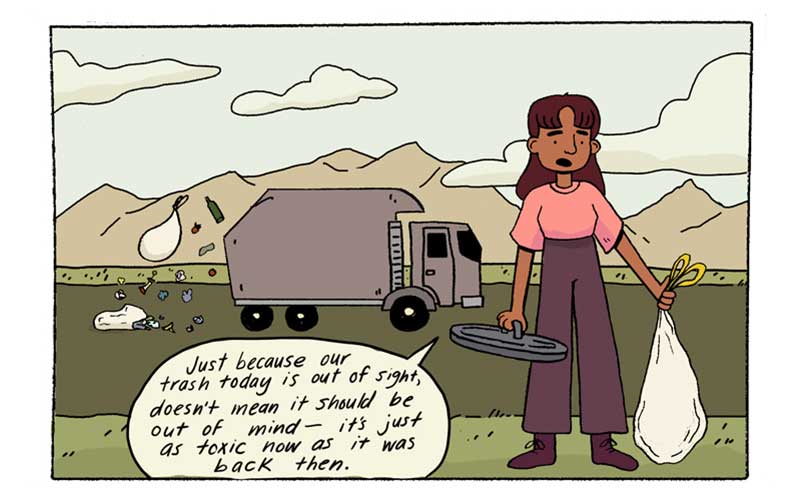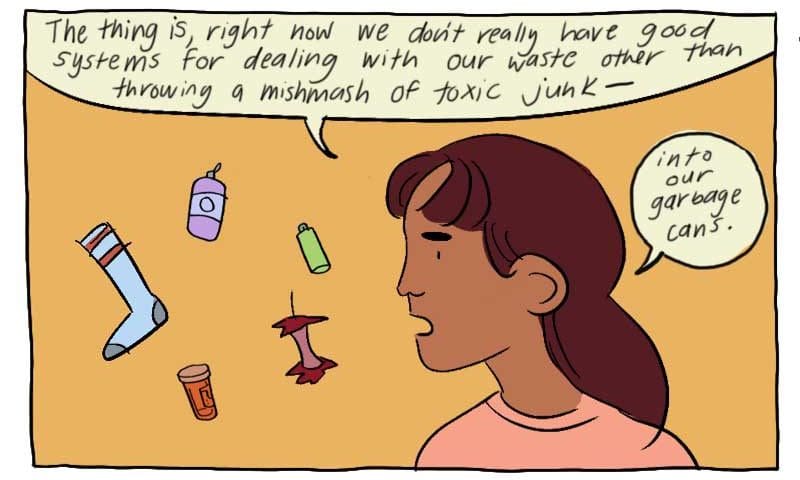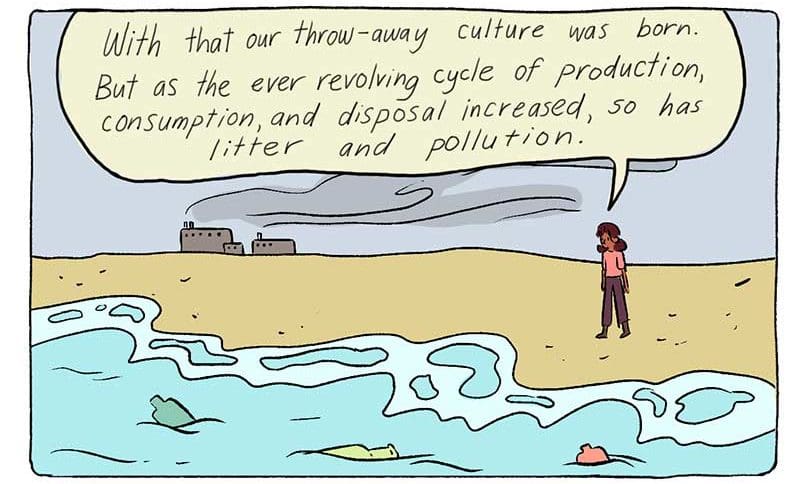Our waste disposal systems, like landfills and incinerators, simply can’t handle the volume of trash that is produced every day. What’s more, these waste disposal problems put us at risk. Burning and burying trash creates health threats and environmental hazards, including toxic emissions that amplify the climate crisis.
In the U.S., only 30% of the 268 million pounds of trash generated each year gets recycled. The remaining 223 million pounds? That’s all sent to landfills, which produce toxic garbage juice that seeps into the groundwater, and incinerators, which release harmful emissions into the air. Sadly, these dangers exist right here in New England, where we have 75 active landfills and 16 active trash burners.
We can solve toxic, disposal-related pollution by producing less trash. How? The following three-part illustration series reveals just that. (Hint: We need to invest in Zero Waste systems). But that’s not all this series covers. You’ll also learn about the history of garbage (and how our waste disposal problem got so bad in the first place), the problems with landfills and incinerators, and who is really to blame for all this trash.
The History of Trash
The history of garbage disposal goes way back. In the Middle Ages, people threw their trash into the streets. Now, everything goes to landfills and incinerators. The first installment of our illustrated series explains the evolution of our waste disposal systems:
To Bury or to Burn Our Trash? That’s the Wrong Question
To “get rid” of our trash, we use landfills and incinerators, which are toxic to the environment and our health. In this illustrated story, you’ll learn about waste disposal problems and how adopting Zero Waste systems can help:
The Great Flood of Single-Use Packaging
While our waste disposal systems may not be effective, consumers aren’t to blame for the single-use plastic crisis. In the final part of this series, You’ll learn why plastic producers must be held accountable for manufacturing the trash that puts our health and environment at risk:
CLF In Action
Plastic producers want us to believe that we’re responsible for the influx of trash tainting the earth – but it is not our fault. And while we have relied on landfills and incinerators for waste disposal throughout history, that doesn’t mean these systems are safe for our health or environment – or that we should continue to use them as the primary method for managing trash.
We recognize the dangers that landfills and incinerators impose on our communities and environment. That’s why CLF’s Zero Waste Project works to change our waste disposal systems – to create a healthier New England for all. In fact, right now we are advocating for bans on single-use plastics, laws that hold plastic producers responsible for the waste they create, and community-wide zero-waste systems.
To take action in our fight against our problematic waste disposal systems, check out our Zero Waste Activism Toolkit.




